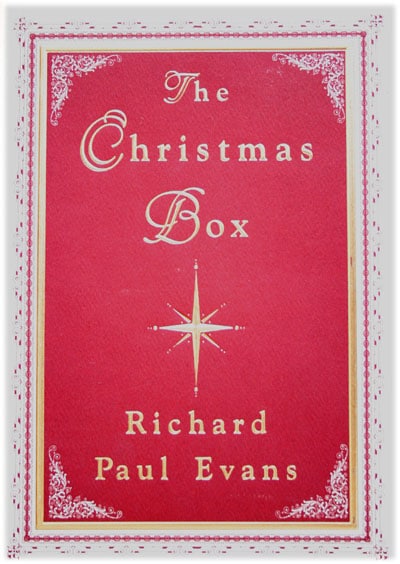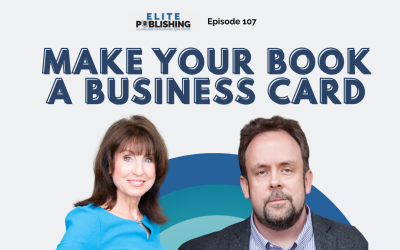by Carolyn Campbell
Return to DIY Publishing · Print/Mobile-Friendly Version
The Christmas Box made history as the only self-published novel to hit #1 on The New York Times best-seller list as a self-published book. It further set a precedent as the only book to simultaneously hit #1 on The New York Times hardcover and paperback best-seller lists. According to The Wall Street Journal, in 1995, The Christmas Box had the highest one week sales of any book in their list’s history.
What do you see as the most important first step in considering self-publishing a book?
First, don’t start by considering self-publishing. Becoming self-published is not the easy way to become a published book author, but it is sometimes the only way.
In studying self-publishing, you will see both history and the law of chance aren’t on your side. When I decided to self-publish The Christmas Box, no publisher wanted it, yet I sensed that readers wanted it very much. I would definitely begin by submitting the book to traditional publishers through an agent rather than trying to send it to publishers directly.
Are there ways to sense when it is time to shift from seeking traditional publishing to deciding to self-publish? How long did you wait?
You have to listen to your gut instinct. I quit sending The Christmas Box off to publishers really fast. I sent to six publishers. My mail all came back and said the same thing, and even all the local publishers had no interest. You need to listen to what the rejections are saying and ask yourself if they are all saying the same thing. If they suggest changes that make sense to you, as far as making a better book, do it.
But at the same time, realize that if you have something that is a new paradigm the experts often aren’t experts. A paradigm pioneer is going to be rejected because it doesn’t look like a best-seller. Both The Christmas Box and The Celestine Prophecy didn’t look like what was succeeding at the time when they were released. Now everyone wants to see a book that looks like one of those two books.
Are there ways to anticipate whether a particular book is marketable as a self-published book?
One way is what I call the tuna casserole syndrome. Say you have a great tuna casserole recipe. You invite friends over for dinner and they say it’s great. If some of the people at your party go out and start making tuna casseroles, that isn’t the time to self-market your recipe. But if someone calls back a week after the dinner and says they are coming to get the recipe to start making it for their friends and their friends start calling you for the recipe — that is when you know you might have something.
Before you decide to self-publish, start sharing your book with people around you — family, friends and business associates. Be sure you are convinced that you have something special, because it takes a lot of work to take your book outside your own circle. And I would start with agents, not publishers.
Once you have decided that self-publishing might be your route, what financial and artistic considerations should you keep in mind before you begin?
Make sure you have the funds to print, design and market the book. Above all, your book must not look like a self-published book. Ninety-nine percent of the time, readers, distributors and booksellers can pick out a self-published book. If your book does not look as good as a book published by Doubleday, which is who you are competing with, don’t bother.
How significant is book design in contributing to book sales in self-publishing?
There is a phrase called “nephew art.” This is where someone says, “I had a nephew who was a hippie van painter — I’ll let him design my book cover.” Sad to say, lots of time when you get a friend to do illustration, you kill yourself in the market. Friend illustrations are too often sappy and cheap and don’t compete on a level with national publishers.
When I decided to self-publish The Christmas Box, I decided on a very simple cover design with no illustrations. When Doubleday called, they told me mine was one of the most attractive self-published books they’d ever seen.
I’d suggest hiring an advertising agency or graphic design firm to do your book — it’s worth the money to make your book look like more than it is. If you put out $5,000 to print your book, it’s worth $1,000 to make it look right. It’s easily worth 10% to 20% of the printing cost to make the book look its best because if you make it look wrong you waste all of your money.
Once your book is designed and ready to market, what is the next step?
You have to have adequate distribution. Call the bookstores and ask which distributors they are working with. Distributors can make more money with your self-published book than with a national book coming down, so they are your sales force. Distributors are locally-based, so call the ones near you and ask a lot of questions.
How do distributing and marketing intersect?
If your book looks good, and you have the promotion and design, you will get more distribution. Back to the tuna casserole again. Say you walk into a store and want them to sell your tuna casserole. They’ll ask why they should sell yours when they have a deli there. You tell them it’s because you are doing a radio show and telling people to come to their store. You are making them money.
The only question in all marketing is “what’s in it for me?” You have to give them a reason to sell your book. A crucial aspect that I learned is that there are two sales that take place — one to the bookseller and one to the consumer. With The Christmas Box, consumers forced the booksellers to take the book in. It hit #2 on The New York Times best-seller list, but was only in 20% of the bookstores, so every bookseller in America was looking for The Christmas Box. When I went to the ABA show, booksellers told me, “You are the guy that ruined our Christmas.”
How important is self-promotion when self-publishing a book?
It matters ultimately. Someone has to care about your book, and if you are very lucky, you’ll have a publisher and a publicist who care a great deal. If you’re not willing to work for it, the publisher will usually back out and back down to your level… and you will limit what you have. At the ABA show during my first year with The Christmas Box, I sat next to young woman who also had a self-published book. While my book was doing very well, hers wasn’t selling at all. I thought her concept sounded good, so I was curious about her lack of sales As we talked she said she wouldn’t go on radio shows because she hated her voice, wouldn’t do newspaper interviews because she gets too nervous, and wouldn’t do book signings because she hates to speak in public. She was doing absolutely nothing and had an excuse for everything. I soon decided she didn’t want her book [to sell] that much.
What avenues of self-promotion did you find to be most effective and accessible?
Radio is the easiest and most accessible. In the beginning at least, it’s too difficult to get on TV. But there is always a little 1,000 watt radio station where you can call and asked to be interviewed. Now, when I go on tour, I do 20 cities and there is someone to meet me at every airport. But in the beginning, I did it in my own car, got a hotel room close to the airport, got a rental car and started driving. You can buy radio station guides, or find them at the library or on the Internet. I’d look for talk stations and ask to be on their show. I’d get up in the morning and do interviews. When I wasn’t touring, I did a lot of radio interviews by phone at my home.
When I first started, I was trying to get a local independent chain to sell my book. They were not real interested until I told them I had already ordered a billboard campaign. They were a lot more interested when they understood that I had put as much money behind promoting my book as I put into printing it.
In the beginning, I put $7,000 into the Utah market. I sold my book for $4.95 and put $1 into promotion for each book I sold. Initially, I hired a local publicist at between $1,000 and $1,500/month. It’s worth it if you have the money. It’s also important to realize just how big the United States is. You can drop $100,000 in marketing and not make a dent.
With the small window of opportunity that you have to be successful and get noticed, the best strategy is to be a big fish in a small pond. Focus your money on a local market. If The Christmas Box had been brought out nationally, it never would have sold among 80,000 other titles. In the first year, I concentrated on the Walden Books just in Utah. The other regions saw our sales record and realized The Christmas Box was not on their list, and they ordered it for the next year.
What advice would you give self-published authors about book tours?
Book tours can be tremendously valuable sales tools. If you are going out to sell your book as a self-published author, tell why you wrote the book, the effect it had on you and others, and give people reasons to buy the book.
I’m the first author I’ve ever seen hand out fliers at book signings. To help keep people from shying away from approaching an author sitting at a table, hand them a flier, tell them about the book, give little quotes or testimonials. But don’t plan to go to bask in great glory. Remember that this is not an ego trip. If you think it is, you will get eaten up emotionally. Always go on tour to work. A lot of authors drop out of touring. But remember, you have to pay the price if your book and the message you are sharing really matters to you.
What do you see as your most innovative promotional strategy?
A really defining moment happened at the Mountain Plains book show. I wanted to meet the booksellers, who were all out meeting the well-known authors who were brought in by the publishers. The booksellers would get their books autographed and then get back in line behind another established author. I could see that I was really missing the audience here.
It suddenly hit me that if I didn’t care about this book, who would? I noticed there was one empty seat at the end of the table where the big-name authors were sitting. I went and sat down in that chair with my books. One of the organizers saw me. I could tell by the look on her face that she intended to ask me to leave. When she came up to me, I looked up and asked, “Am I late?” A bit flustered, she asked, “May I get you some water?” I saw her the next year, after The Christmas Box became a best-seller with a $4.25 million advance from Simon & Schuster. She said I’d come quite a ways and I thanked her for not throwing me out. She asked, “What did it hurt?”
What was your greatest challenge in self-promoting your book?
Let me say that my failures were the best thing that could happen to me. If I’d gotten a publisher right off, I wouldn’t have the success I have now. Because I had to promote it myself, I learned how to become market-driven. I needed to be real honest about the dynamics. When I saw what happened locally, I knew that if I could duplicate that nationally, I could have the number one best-seller in history.
Along the way, I discovered it’s very difficult to get national media attention for fiction. Talk show hosts feel that fiction isn’t intriguing or relevant enough for them to sit down and talk about it. Eighty percent of the books featured on talk shows are nonfiction, where they can talk about relationships or dyads or near-death experiences. They feel that asking a fiction author to “tell me what your book is about,” doesn’t make a good interview. Luckily, I had a story behind my book (his mother losing a child to death) that made it interesting to the press.
When you become market-driven, you find out who likes your book and who your market is. I crossed paths with the author of a book called Twelve Golden Threads, about the lessons learned tying quilts. She was having meetings and book signings with quilting clubs. I thought her focus was a good move. Once you find the basic example of who is buying your book, that is the key to success on a larger scale.
When do you recommend beginning self-promotion efforts?
Start a year in advance to plan the best time to release your book. Author Dave Baldacci (Absolute Power, The Winner, Total Control) released his book this year in mid-December. The year before, he released a book on Jan. 1. Why Jan. 1? Because all the major guns are dropping their books in November and December. Michael Crichton came out with his book Feb. 1. Lots of books come out during Christmas, when all the sales are.
Why did you write The Christmas Box? Why should anyone write a book?
I wrote The Christmas Box because it mattered to me. In the beginning, publishing wasn’t a consideration. The book was written with all of my heart for my two daughters. If the only result was that they understood that their father loved them, that would have been enough. If my mother was the only one who read it and she knew that I understood her pain over losing a child, that would have been enough. The Christmas Box worked because it mattered to me. Write something because it matters.
This article originally appeared in Inscriptions.
This article may not be reprinted without the author’s written permission.
Carolyn Campbell has published more than 600 articles in national magazines. Her articles have also been published internationally in China, Japan, Germany, England, Denmark and Australia. Campbell is the author of Together Again: True Stories Of Birth Parents and Adopted Children Reunited, Love Lost and Found: True Stories of Long Lost Loves Reunited At Last, and Reunited: True Stories of Long Lost Siblings Who Found Each Other. Campbell lives in Salt Lake City, Utah, with her husband and four children.





0 Comments